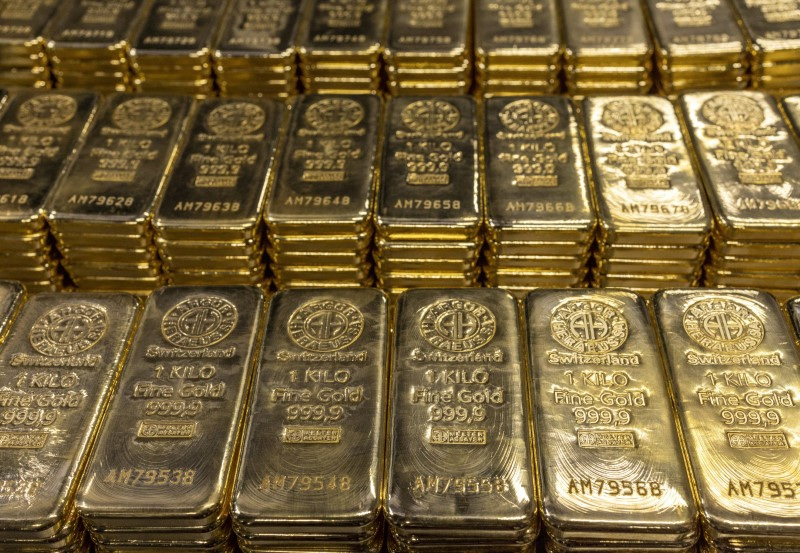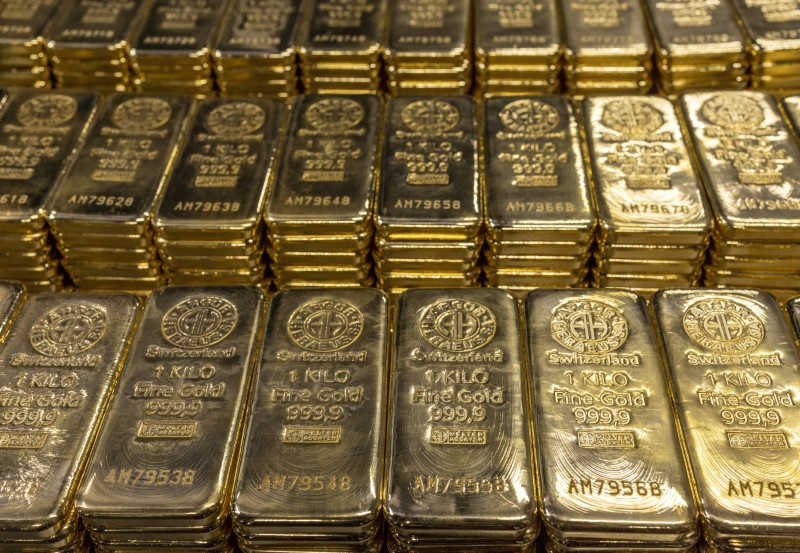Commodities
Factbox-How investors buy gold and what drives the market

(Reuters) – Gold hit a record high above $2,600 per ounce on Friday, as the prospect of more U.S. interest rate cuts and global geo-political uncertainty boosted its appeal.
Bullion has risen more than 26% so far this year, and as market bulls lock in further gains, another milestone of $3,000 per ounce is in focus.
Here are the different avenues for investing in gold:
SPOT MARKET
Large buyers and institutional investors usually buy gold from big banks. Prices in the spot market are determined by real-time supply and demand dynamics.
London is the most influential hub for the market, largely because of the London Bullion Market Association (LBMA). The LBMA sets standards for gold trading and provides a framework for the OTC (over-the-counter) market, facilitating trades among banks, dealers, and institutions.
China, India, the Middle East and the United States are other major gold trading centres.
FUTURES MARKET
Investors can also get exposure to gold via futures exchanges, where people buy or sell a particular commodity at a fixed price on a particular date in future.
COMEX (Commodity Exchange Inc), a part of the New York Mercantile Exchange (NYMEX), is the largest market in terms of trading volumes.
Shanghai Futures Exchange, China’s leading commodities exchange, also offers gold futures contracts. The Tokyo Commodity exchange, popularly known as TOCOM, is another big player in the Asian gold market.
EXCHANGE TRADED PRODUCTS
Exchange Traded Products (ETPs) or Exchange Traded Funds (ETFs) issue securities backed by physical metal and allow people to gain exposure to the underlying gold prices without taking delivery of the metal itself. [GOL/ETF]
ETFs have become a major category of investment demand for the precious metal.
Global physically backed gold ETFs attracted a fourth consecutive month of inflows in August after North American and Europe-listed funds increased holdings, the World Gold Council (WGC) said.
BARS AND COINS
Retail consumers can buy gold from metals traders selling bars and coins in an outlet or online. Both gold bars and coins are effective means of investing in physical gold.
DRIVERS:
INVESTORS AND MARKET SENTIMENT
Rising interest from investment funds in recent years has been a major factor behind bullion’s price moves.
Sentiment driven by market trends, news, and global events can also lead to speculative buying or selling of gold.
FOREIGN EXCHANGE RATES
Gold is a popular hedge against currency market volatility. It has traditionally moved in the opposite direction to the U.S. dollar as weakness in the U.S. unit makes dollar-priced gold cheaper for holders of other currencies and vice versa.
MONETARY POLICIES AND POLITICAL TENSIONS
The precious metal is widely considered a “safe haven”, bought during uncertain times in a flight to quality.
Major geopolitical events, such as extended conflicts in the Middle East and Europe have added to uncertainties for global investors and burnished gold’s appeal.
Policy decisions from global central banks also influence gold’s trajectory. Lower rates reduce the opportunity cost of holding gold, since it pays no interest.
Gold’s latest rally was triggered after the U.S. Federal Reserve began its easing cycle with an outsized half-percentage-point cut on Wednesday.
CENTRAL BANK GOLD RESERVES
Central banks hold gold as part of their reserves. Buying or selling of the metal by the banks can influence prices.

Central bank demand has been robust in recent years because of ongoing macroeconomic and political uncertainty, analysts have said.
More central banks plan to add to their gold reserves within a year despite high prices for the precious metal, the World Gold Council (WGC) said in its annual survey in June.
Commodities
Oil prices rise; U.S. crude inventories plunge, Russia-Ukraine truce eyed
Commodities
India’s Reliance to stop buying Venezuelan oil over US tariffs, sources say
Commodities
Oil prices climb on Venezuela supply worries

 Forex3 years ago
Forex3 years agoForex Today: the dollar is gaining strength amid gloomy sentiment at the start of the Fed’s week

 Forex3 years ago
Forex3 years agoUnbiased review of Pocket Option broker

 Forex3 years ago
Forex3 years agoDollar to pound sterling exchange rate today: Pound plummeted to its lowest since 1985

 Forex3 years ago
Forex3 years agoHow is the Australian dollar doing today?

 Cryptocurrency3 years ago
Cryptocurrency3 years agoWhat happened in the crypto market – current events today

 World3 years ago
World3 years agoWhy are modern video games an art form?

 Commodities3 years ago
Commodities3 years agoCopper continues to fall in price on expectations of lower demand in China

 Economy3 years ago
Economy3 years agoCrude oil tankers double in price due to EU anti-Russian sanctions























